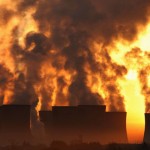Why Big Coal Shouldn't Kill the Climate Bill
 The energy market is about to change and Big Coal can be in the game if it works to help rather than hinder a fair climate bill.
The energy market is about to change and Big Coal can be in the game if it works to help rather than hinder a fair climate bill.
Senator Byron Dorgan gave Big Coal a cold shower the other day.
Dorgan warned coal’s lobbyists not to strut like roosters in the henhouse if climate legislation falls victim this year to President Obama’s passivity and Harry Reid’s fecklessness.
Looming clean air and water standards, ballooning natural gas reserves, and a long awaited revival in nuclear energy threaten to put three big hitches in coal’s get-along. And just because a climate bill putting a price on carbon might be down this year doesn’t mean it’s out forever.
Dorgan, hailing from the land of lignite, is a friend of the coal industry. The late Robert Byrd, another longtime coal ally, offered the industry a similar message in 2009.
Which is that Big Coal should be at the table negotiating a climate bill that offers regulatory certainty to all energy resources, not trying to up-end the table, egged on by OPEC enablers in Congress who see nothing wrong with perpetuating U.S. overdependence on oil.
It’s not clear yet whether Big Coal is ready to heed its friends’ warnings. But its customers in the utility biz are poised to vote with their feet.
By 2016, half the nation’s coal-fired power plants will be more than 50 years old. Utilities can rely on those don’t-laugh-it’s-paid-for coal beaters only so long before they will have to replace them.
Upcoming clean air and water regulations threaten to speed up those old plants’ trip to the boneyard.
The EPA on July 6 proposed a rule, which would apply in 31 states east of the Rockies, to cut back on pollutants that form harmful ozone and particulate matter.
Another proposed rule targets coal ash, the stuff that spilled out of a TVA impoundment in 2008 and clogged up Tennessee River tributaries.
Another rule to reduce emissions of mercury and other airborne toxins is due next year.
By coming to the table, the coal industry could press for legislation that would goose R&D aimed at finding economical ways of sequestering CO2, the key to boosting utility interest in building new coal plants that could comply with the new rules.
Without a reasonable prospect of sequestration, however, utilities will be wooed by the fetching message of the gas industry, which is feeling its oats. Once the least politically potent of the fossil fuels, gas has been putting out ads that would seem downright uppity if you’re an oilman or coal baron.
Unlike coal, the gas boys say their fuel burns cleanly and emits only half the CO2. Gas is the ticket for utilities to dump their dirty old coal plants, avoid EPA’s red tape, and get ahead of the curve if and when a carbon price is imposed.
Utility execs fret about the risk of gas price spikes, but dramatic increases in the size of domestic gas reserves have dampened that concern to a degree. A 2009 report by gas experts estimated that the U.S. natural gas resource base totals 1,836 trillion cubic feet, the highest in the committee’s 44-year history. Its estimate is equivalent to about 80 years of current domestic consumption.
Utility bosses also are looking afresh at nuclear, which at last seems to be emerging from the shadow of Three Mile Island and other technological screw-ups to advertise its wares as a clean, reliable, zero-carbon energy source that runs 24/7 on cheap fuel.
Applications for nearly 30 new reactors are pending before the Nuclear Regulatory Commission. EDF, a big French utility that builds nukes all over the world, sees a promising market in America and has formed a joint venture with Baltimore-headquartered Constellation Energy to build four U.S. plants.
Competition is coming for utility investment dollars. Coal could be in the game, if it listens to its friends and helps rather than hinders negotiation of a fair climate bill.
Or, coal can continue pretending that the energy market will never change and let the future happen.